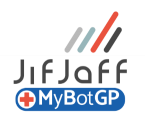Process Mining and Task Mining are two terms that you will come across when you start to research Robotic Process Automation (RPA). But what are the differences? Well, Task Mining operates at a desktop level to discover and analyse the tasks that users perform, while Process Mining is a tool to gain insight into enterprise level processes.
Let us take a further look into these terms and their differences:
Task Mining and RPA
Task Mining works at a desktop level to discover and analyse tasks that users process. Essentially the things they solely have responsibility for. For example, an invoice, order, contract, or logistical process may pass through three teams. The software installed records what they do, and for how long. This data is also useful to review why some teams or members are faster or slower, and it understands the causes of bottlenecks or find gaps in longer processes. The software can also, (when you use a good one) understand text and model out projections to see what the process will look like when tweaked.
Process Mining and RPA
Process Mining is a tool that lets you view multiple RPA processes or workflows at speed at an enterprise level. See it as almost stepping out of the business and running software that will map everything that is going on across individual departments or the whole company. The mining tools works with event logs of crucial enterprise systems to highlight the steps undertaken to complete a specific process. In summary, process mining is a powerful tool to quickly look at everything, take that data and decide what should or should not be automated. It is a way to see how everything is connected and working together. Use that data to model your enterprise requirements for RPA (i.e. reduce operating cost, increase resilience, standardisation, and scalability).
Enterprise organisations should be in a minimum of phase two or three before they roll out Intelligent Automation at scale. To benefit, companies are led to believe (and to some extent, this is correct) that standardisation is required to optimise your processes and standardise them to get more out your RPA rollout. There are arguments either way, depending on where a business is and what their perceived business benefit is. These tools work and many also provide monitoring which is essential for metrics.
Unlocking Value
Both Process Mining and Task Mining can independently provide immediate benefits by informing improved resource allocation. To maximise the potential value, RPA should be looked at as individual elements within a broader operational excellence strategy.
Combining Process Mining and Task Mining tools with RPA or intelligent automation tools, chatbots help (at the enterprise level) quickly see what is happening, so new strategies to deliver your desired outcome can be reviewed by management. Some planned and others in real-time by users if at a lower level.
Don’t run before you can walk
With projected RPA & AI spend in the billions and many assessing what jobs people will do in the future workplace. The future will be a blended workforce, people, bots & AI used to deliver our services and run our businesses. To benefit, make sure you know what you are doing before you start. You need to think strategically and build this capacity internally through an RPA COE based on JifJaff’s Nine Pillars of Automation.
Why JifJaff?
JifJaff is a specialised independent Robotic Process Automation (RPA) consultancy company & RPA COE creation, expert. We design, deliver and support RPA solutions as well as help you become experts at doing this yourself through our certificated Nine Pillar Programme.
Being independent means that we can objectively help you identify the correct RPA software (there are multiple to choose from) for your business. By helping you select the right vendor and processes to automate, we can reduce your operating costs and help you deliver more with less. We understand the methods that are required to manage business across front and back office and can advise on and implement the best strategy to leverage RPA. RPA supports you while helping your business embrace the future.

